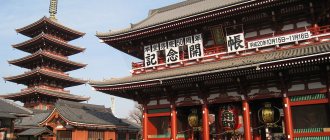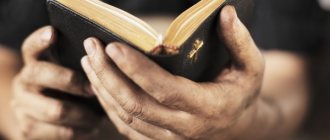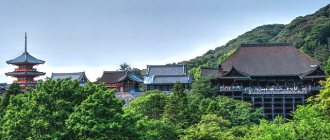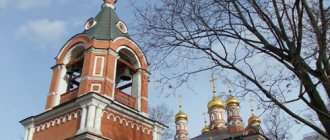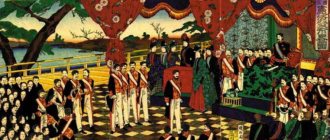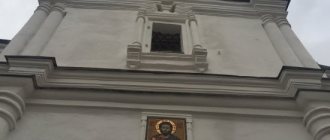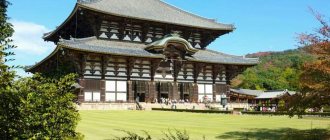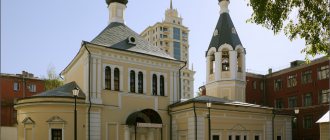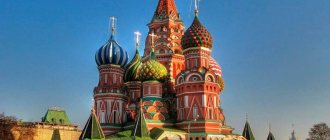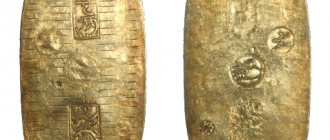| From left to right: Empress Shoken and Emperor Meiji |
Emperor Meiji was known for his love of writing waka. After himself, he left more than 100 thousand poems for the Japanese people. His wife, Empress Shoken, also wrote poetry in this genre. She has about 30 thousand poetic works to her credit.
| Omikuji from Meiji Shrine |
“Writings in the form of omikuji, found in shrines, represent a kind of prediction of good luck or, on the contrary, predict trouble. In our case, the waka belongs to either Emperor Meiji or Empress Shoken,” says Miki Fukutoku, head of public relations at the Meiji Shrine.
| Omikuji stall at the south gate |
Features of Meiji Shrine
Meiji Shrine is a relatively new place of worship. It was created in 1920 according to the concept of wakonesai (the soul of the Japanese and the talent of the Western man). Therefore, unusual omikuji are not the only feature of the temple.
| Ginkgo Alley of the Meiji Gaien Outer Garden |
According to Miki Fukutoku, most people tend to think that the temple is only the main shrine. In fact, it, with its internal and external parts, is something big. The temple, located in the inner garden, is a symbol of the Japanese soul. Here you worship and show your respect to the spirits. But the outer garden of the temple is designed in a pro-Western style. There is an art gallery containing 80 paintings. They reflect the life of Emperor Meiji, who actively maintained friendly relations with foreign countries. For example, symmetrical ginkgo trees are also Western trends.
The Treasure Museum, located in Gaien Gardens, vividly illustrates the fusion of Japanese and Western flavors. The architectural design of the building is reminiscent of Sosoin, the treasury of the famous Todai-ji Temple in Nara Prefecture. However, the Meiji Treasure Museum, unlike the temple, is made not of wood, but of concrete.
| Meiji Shrine (naien), view from above |
The sanctuary has three main parts:
- Naien (inner part), the place where the sanctuary buildings are located,
- Gaien (outer area), home to a memorial art gallery and sports facilities, including one of the oldest baseball stadiums, Meiji Jingu, and the Meiji Memorial Hall and Wedding Hall.
Note that the total area of the forest is about seven hundred square meters. About 170 thousand trees, consisting of 245 different species, grow here. This landscape was designed and created by Seiroku Honda, as well as his assistants Takanori Hongo and Keiji Uehara, who boldly refused the proposal of then Prime Minister Shigenobu Okuma to use exclusively cedar in the design. Honda wanted to create an evergreen forest, but as it turned out, the local soil was not suitable for this tree.
| Forest of Meiji Shrine |
“In 2011, in preparation for the temple’s centenary, we monitored the tree species growing in the area. So, as it turned out, in the local forest there are much fewer trees alien to Japan than, say, in the parks of central Tokyo. This man-made forest was created to delight with its beauty for many centuries and it seems that it will continue to do so,” said Miki Fukutoku.
| Miki Fukutoku, Head of Public Affairs Department at Meiji Shrine |
Such richness of nature attracts more tourists to this place than believers. In addition to plants, you can also find rare birds here, which often fly to the forest. This place is home to the endangered Japanese golden orchid and many other rare plant species. The forest, which became the wonderful brainchild of Honda, Hongo and Uehara, will delight tourists and locals for many years to come. Fukutoku explained: “According to experts, the trees did not even live half their life. The thing is that camphor trees can live from 300 to 400 years. That’s why not only our grandchildren, but also great-grandchildren, and even great-great-grandchildren will be able to come here!” According to Fukutoku, despite all these attractions, the number of foreign tourists is increasing, but not so rapidly. A steady increase is expected in the future, because the Meiji Shrine is the best way to get acquainted with Japanese culture. Fukutoku added proudly, “Of course, shrines on the outskirts of the city may offer a more authentic atmosphere, but our temple is more accessible. We can, for example, boast of such a guest as US President Barack Obama, who was in the temple last year. Meiji Shrine is truly unique. Being in the center of the capital, you can not only see the shrine, but also suddenly find yourself in a real forest.”
| Autumn Festival at Meiji Shrine |
2.2. Meiji Temple.
So we decided to go to the Shibuya area again (with Sashko, my roommate) and explore it a little more. Since he didn't know any Japanese or Japan, he decided to stick with me. In general, around 11 am, we had a snack at Gyudon in Matsuya (松屋), which was located at Nishi-Ogikubo Station (西荻窪駅). Afterwards we didn’t go along the cheapest route (we used JR), but at that time I still hadn’t figured out all the subtleties and even just wanted to go JR. Having got off at Shibuya JR (渋谷JR) station, we went straight to the famous alley, where supposedly there were supposed to be cosplayers (these are those who dress up in different costumes :) ), but we didn’t take into account that on Thursday there weren’t really any of them there )) at first I thought I was in the wrong place and asked around where “the people who are dressed strangely” were, but at first they couldn’t find an answer to my question, then they guessed that I was talking about cosplayers. In general, they said that they should be here, but they weren’t there on Thursday. In general, a little disappointed, we walked to the Meiji Shrine (明治神宮) through the Yoyogi district (代々木).
Yoyogi District, Tokyo.
After we climbed onto the bridge overlooking Yoyogi National Stadium, we were almost at Meiji Shrine, all we had to do was cross the bridge.
Yoyogi National Stadium, Tokyo.
After crossing the bridge we immediately found ourselves at the Meiji Shrine.
Entrance to the Meiji Shrine grounds.
We “wash ourselves” before entering the temple.
And a little from Wikipedia about this place:
Meiji Jingu
(Japanese: 明治神宮
meiji jingu
:) is the largest Shinto shrine in Tokyo, dedicated to Emperor Meiji (明治天皇) and his wife Empress Shoken.The shrine, located in central Tokyo, covers an area of approximately 175 acres (70.82 hectares). Surrounded by trees, the building is a typical example of unique Japanese temple architecture. This style is called Nagarezukuri, and cypress from Kiso is used in construction. The garden features all varieties of trees and shrubs that grow in Japan. More than 100 thousand shrubs and trees were donated by people all over Japan.
I probably won’t add anything of my own here, I’ll just say that this is a very good place and a “Must Have” for everyone!
Below is a short video that was filmed on the grounds of the Meiji Shrine.
2.4. Asakusa.
Before school began, we decided to drive into the distance of Tokyo, namely to Asakusa, and the next day to the Ueno Zoo. First we headed to Asakusa. Arriving there, the view in the metro was unforgettable, or rather there were various or painted walls or glass walls, under which there were various “exhibits”, like in a museum.
Subway walls. Asakusa.
Subway walls. Asakusa.
So, we reached the famous Kaminarimon Gate and on this gate hangs a huge Japanese Chochin lantern (提灯).
Kaminari-mon gate and huge Chochin.
Since it was Saturday, there were even more people than usual, because there are always crowds of people in Asakusa, because... this is the most famous place where you can “breathe” antiquity in Tokyo.
By the way, nearby is the Tokyo Sky Tree, whose height is 634 m, which is almost 2 times higher than the previous (Tokyo) tower. Tallest television tower in the world (as of 2012). Construction of the tower was completed in February 2012 (when I was already in Russia), but when I was in Asakusa the tower had already been completed.
Tokyo Sky Tree. View from Asakusa.
Tokyo Sky Tree. View from a building in Shinjuku.
The tower is used for digital television and radio broadcasting, mobile telephony and navigation systems. In addition, the tower has more than 300 boutiques, restaurants, an aquarium, a planetarium and a theater.
So, I got a little distracted, after that very gate we entered Nakamise-dori (仲見世通り) - the road leading to Sensoji Temple (浅草寺).
Nakamise-dori
Man selling Senbei (dried rice)
Entrance to Senso-ji Temple.
Senso-ji Temple.
Before entering the temple, we “fanned ourselves” with the smoke that comes from the candles. This smoke is considered medicinal.
Having entered the temple, we looked and went further... to a pond with carps.
Carp in Asakusa
Carp in Japan are considered a symbol of resilience and courage for their ability to swim even against strong currents, which is why they swim in all Japanese parks, temples, gardens, etc.
Next we went to a traditional style restaurant where they make Okonomiyaki (お好み焼き) and Mojayaki (もんじゃ焼き), restaurants of this type in a place like Asakusa always have lines to enter. And we, after waiting 10-15 minutes, finally entered the restaurant and sat down at the table (on the floor). I ordered a beer and Mondzia.
Cooking Monja
After watching the street performance we went home.
